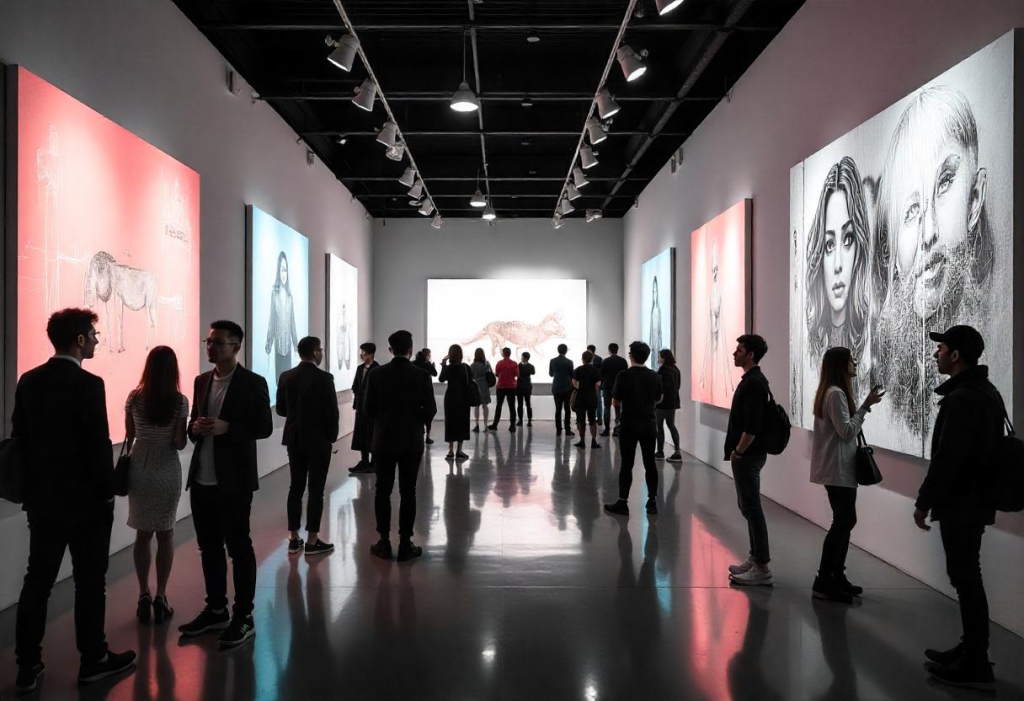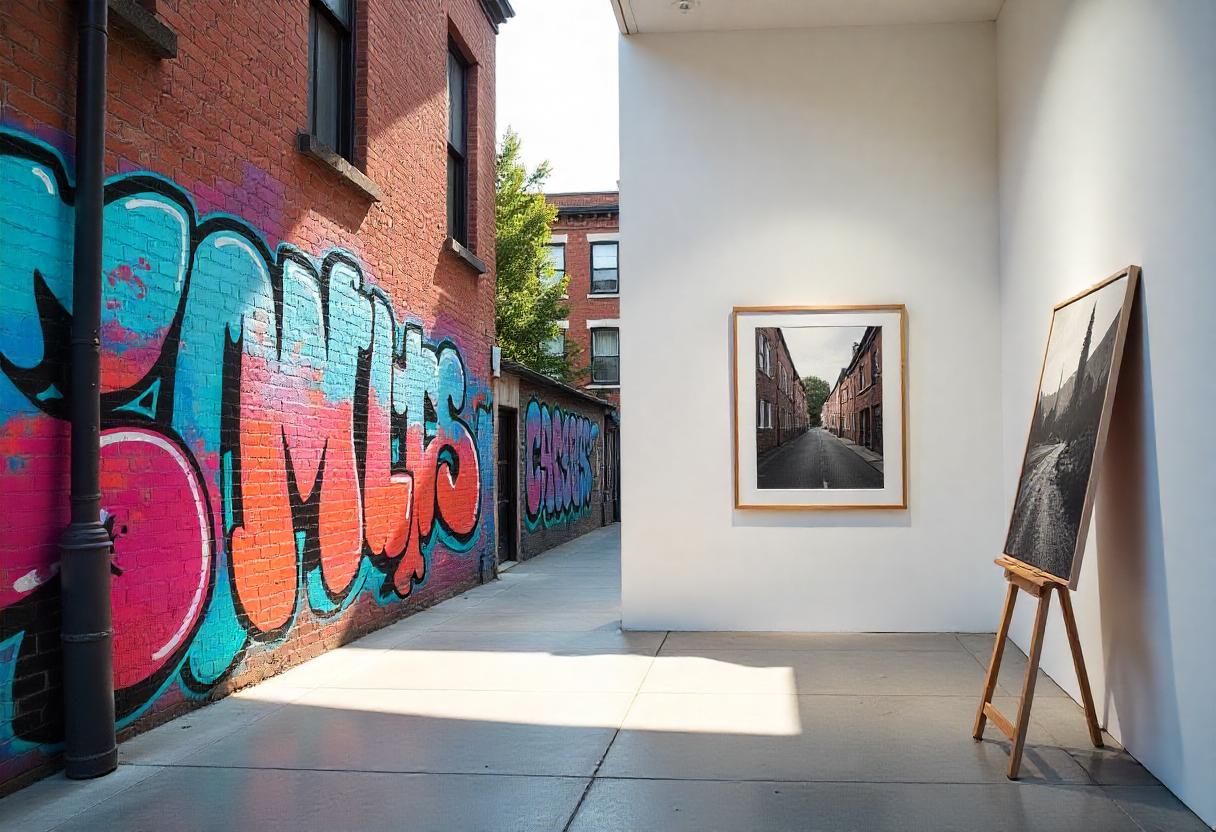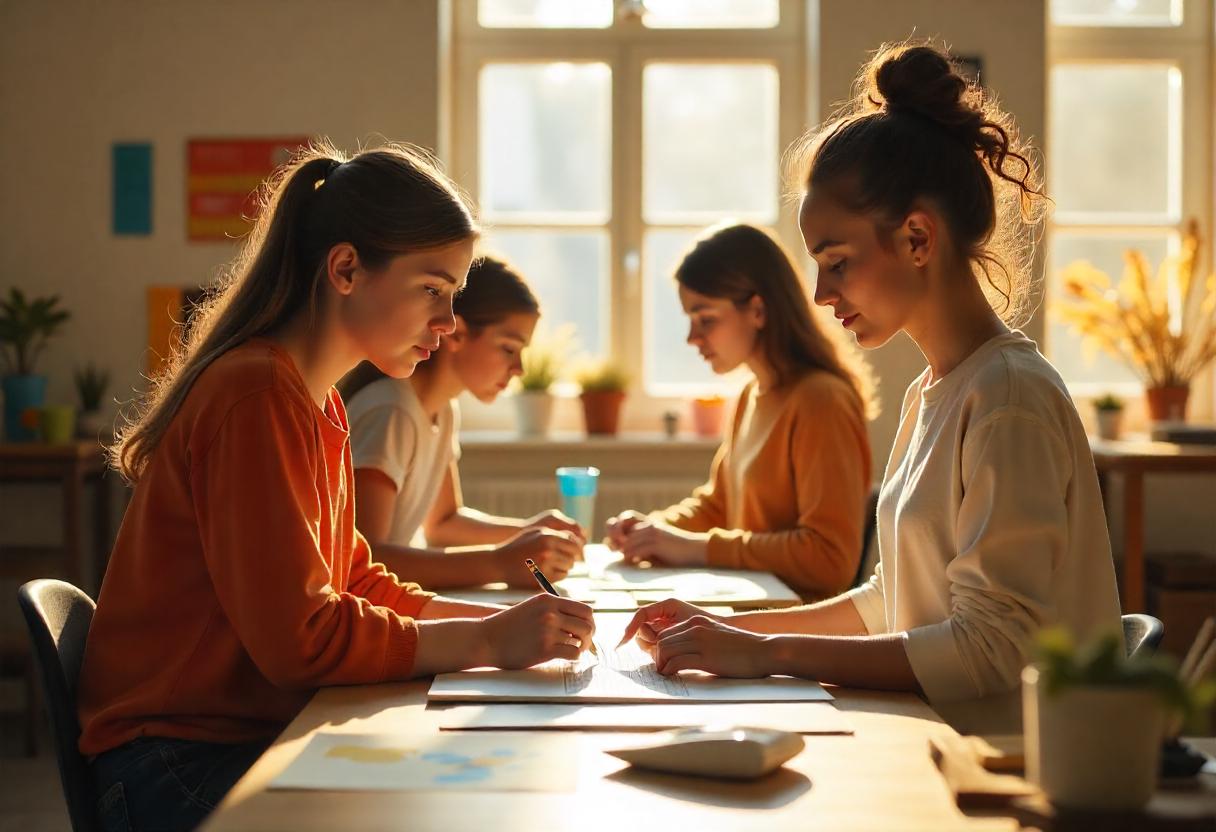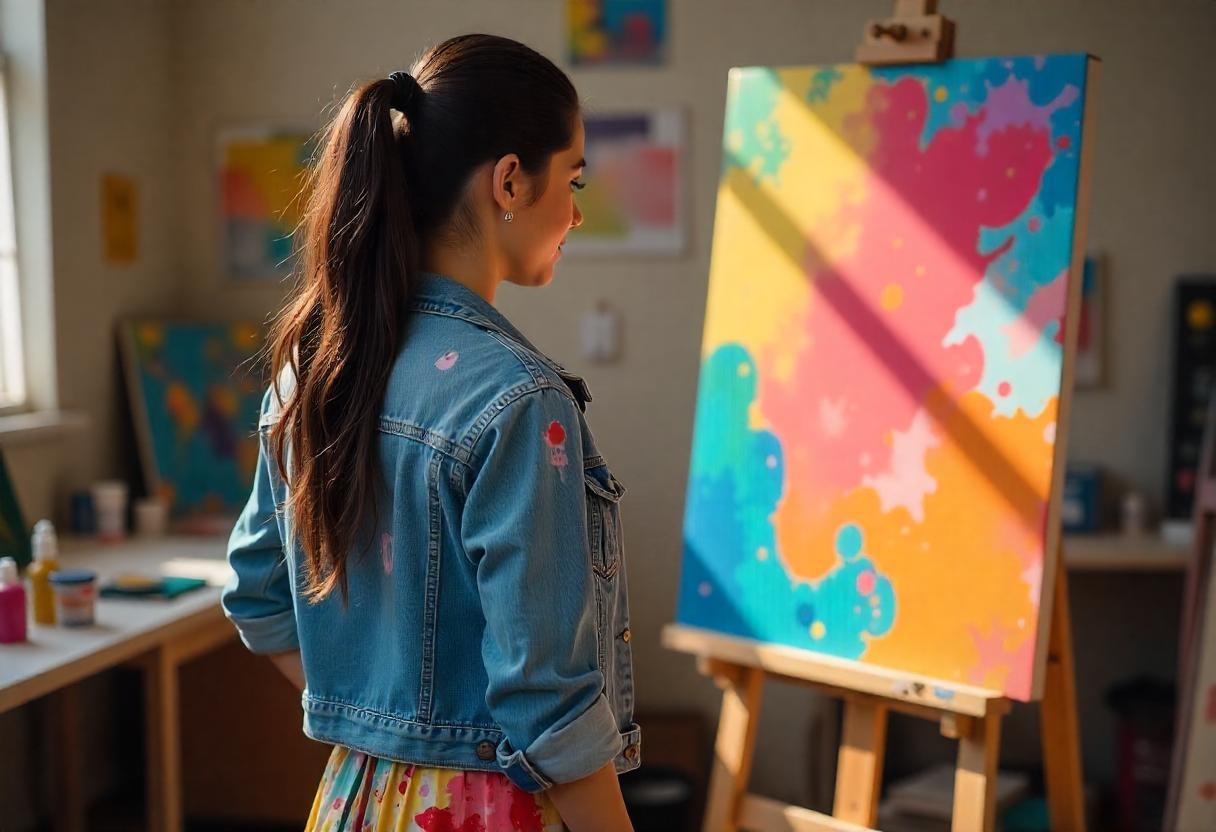Fine Arts in the Digital Era: Evolution or Revolution?
Fine Arts is a vast and varied field that has undergone constant evolution through the ages. The art world, however, has seen rapid changes in the last decade, from purpose, social context, and symbolism to democratization and newer tools and techniques.
Fine Arts, in this digital era, is about capturing the mood of the time and reflecting that through deep, and sometimes intimate, creative pieces.
This article will take you through the evolution of fine arts amidst the digital influence and help you discover different ways in which technology revolutionizes creative expressions.
The Rise of Digital Art – Tools, Platforms, and Techniques
Artists today need to be tech-savvy and aware of related disciplines to cater to their audience. This is the era of accessibility, diversity, and convenient tools that compile different media into a high-functioning computer or tablet.
1. Popular Digital Art Tools
Do you want free career counseling?
Ignite Your Ambitions- Seize the Opportunity for a Free Career Counseling Session.
- 30+ Years in Education
- 250+ Faculties
- 30K+ Alumni Network
- 10th in World Ranking
- 1000+ Celebrity
- 120+ Countries Students Enrolled
The availability of compatible devices and user-friendly software has played a crucial role in the expansion of digital art.
Drawing tablets and styluses support paper-like drawing and allow artists to create highly realistic artworks. These digital drawing surfaces translate different strokes’ pressure, direction, and density into paintings and doodles.
Advanced software like Adobe Illustrator, Adobe Photoshop, Procreate, and SketchBook offer a variety of brushes, strokes, color and texture options, generative fills, and cloud storage that make creation seamless.
Book Now →
2. Platforms to Showcase Your Art
Multiple online platforms have emerged to provide digital artists the right opportunity to showcase their talent, promote their work, and connect with the right audience.
With platforms like Instagram, artists can build their personal brand, increase their visibility, and interact and engage with their audience.
Instagram shop, Facebook marketplace, and websites like Etsy also allow artists to sell their work without much hassle.
Do you want free career counseling?
Ignite Your Ambitions- Seize the Opportunity for a Free Career Counseling Session.3. Trending Digital Art Styles in 2025
2025 is all set to witness art styles that are rooted in personal narratives, socio-political commentary, and a novel approach towards reinventing traditional themes, color palettes, and styles.
Artists from diverse backgrounds are leveraging the latest technological advances to revolutionize the art space, making it immersive, personalized, and accessible.
4. Personalized AI-driven Art
With AI and Machine Learning reaching new heights in 2025, the art world is more likely to see collabs between human creativity and artificial intelligence.
From complex themes, fusion genres, and exploring unconventional textures, to immersive artworks that respond and adapt with viewer interaction, and the use of AR/VR integrated technology to elevate the viewing experience.
Read Also: 7 Creative Careers That Are Exploding Right Now
However, using AI in digital art is also likely to raise questions regarding intellectual property rights, copyright infringement, and ownership of artworks.
5. Collages And Maximalism
The rise in geopolitical turmoil around the world, coupled with anti-authoritarian protests, and a looming environmental crisis pointing towards an uncertain future and increasing climate anxiety, is prompting the popularity of maximalist art styles.
Bold colors, collages, and complex layering are some of the key characteristics that draw people amidst the chaos in the outside world, allowing them to express themselves more freely through art.
6. Retrofuturism
Retrofuturism typically blends elements of retro and vintage aesthetics with futuristic styles like cyberpunk, exploring techno-rich, space-age concepts.
It experiments with dystopian, post-apocalyptic themes using components from different periods.
You’ll often see digital glitches, visual distortions, neon or washed-out colors, and strong geometric shapes. Think bold lines, 3D elements, and striking typography—it’s all about blending nostalgia and vision into a beautiful, visually appealing art style.
7. Neo Brutalism
Inspired by the 1950s-60s Brutalist movement, neo-brutalism uses asymmetry and bold geometric shapes with flat, vivid colors and eclectic palettes.
The high contrast and bold colors are meant to create an immediate impact on the viewer.
Neo-brutalism relies on typography as a key element to convey the message and uses raw and rugged aesthetics to prioritise function over beauty.
8. 3D Digital Art
3D art is typically created using software like Blender, Maya, and 3ds Max. These artworks use depth and volume to create life-like representations of both realistic objects and abstract concepts.
The spatial play and sensory appeal add a sense of drama and are often used in static images, digital sculptures, and virtual environments.
2025 is going to be all about 3D digital art getting popular, especially beyond the conventional realms. With features and AI integration, 3D graphics software is allowing artists to explore textures and materials virtually, letting them expand their creative visions, especially in fields like fine arts, design, and animation.
Emerging Technology and Its Impact on Fine Arts
1. Wider Reach and Increased Accessibility
New platforms, user-friendly software, and free tutorials have opened up art to a wider, more diverse demographic. On the other hand, social media has allowed artists to promote their work, build a brand, and interact with fellow artists and potential buyers online.
2. Use of AI in Art and Its Influence on Artistic Expressions
Generative AI can now create artworks based on detailed and precise prompts. Artists are exploring new forms, depicting complex themes, and venturing into personalized art.
While questions about authenticity remain, AI offers new tools and possibilities that allow artists to seamlessly fuse different styles.
3. Emerging Business Models
The changing market and consumer behavior are pushing art businesses to create data-driven strategies and adopt business models that suit the current scenario.
From custom-made illustrations, leveraging online galleries and digital platforms, and offering print-on-demand services to optimizing blockchain technology and NFTs, the business of art is diverse, complex, and driven by the shifts in the market.
4. Hybridization
With technological integration, artists are choosing hybrid mediums and styles to create meaningful and often complex pieces.
Read Also: From Pixels to Profit: Exploring NFTs in Digital Art
This involves blending traditional styles with modern ones, using AI-based tools to help recreate intricate forms into new digital artworks, and combining human creativity with artificial intelligence and smart technology to appeal to the audience.
5. The Question of Ownership and Ethical Concerns
While technology continues to revolutionize the art space, questions about ownership of generative art and copyright infringement issues remain a concern.
Ethical concerns around consent, inappropriate uses, and negative environmental impact are being raised by artist communities around the world, hoping to create a legitimate middle ground between accessibility and democratization and sustainability and conscious uses.
Fine Arts in the Digital Era – Transcending Galleries and Exhibitions
The advent of social media platforms allowed art enthusiasts to not just look at artworks that appeal to them, but also to purchase through Instagram Shop or Facebook Marketplace.
Artists can link their websites to their social media profiles, use SEO and SEM strategies, and leverage digital marketing options to enhance visibility, drive traffic, and increase conversion rates.
These websites act as a repository of their artwork, offering photos, videos, and digital shows and tours to the viewers, along with a marketplace where they can buy the pieces they like.
E-commerce websites like Etsy have also made reaching potential buyers simpler, allowing artists to expand their horizons and focus on a hybrid business model that doesn’t solely depend on galleries, art shows, and exhibitions to generate revenue.
Creative Education in the Digital Age and the Evolution of Fine Arts Curricula
Fine arts in the digital era are going through a dynamic change. From tools, techniques, and styles to how we perceive it, themes, and modes of sale, the art world is undergoing an evolution.
Read Also: The Future of Art: AI, Fine Arts, and the Rise of Creative Technology
Creative education needs to keep up with this changing pace to make sure the young aspiring artists can continue to make an impact in the art landscape, the way they dream to.
Adapting to the changes and being relevant to the needs of the time are some of the key factors in designing fine arts curricula.
- Ditching the Traditional Syllabus
The first step towards an evolved and relevant curriculum involves moving away from the traditional syllabus and incorporating techniques, methods, and tools that would empower aspiring artists to learn the traditions and their legacies while also mastering digital platforms and software that enable them to create an audience in the current landscape.
- Multi-disciplinary Approaches
Fine arts curricula are no longer strictly bound by the single discipline a student is specializing in. Instead, it combines relevant fields that will help hone the artistic skills and understand the business, engagement, and branding parts of artistry.
Art schools have introduced subjects like marketing, business, advertising, graphic design, and other highly sought-after fields to impart a holistic knowledge that makes students employable and develop their business sense.
- Actively Engaging With the Digital Space
Creative education in 2025 is incomplete without acquainting oneself with the digital space. The rapid technological integration has brought about a multitude of changes, making every creative field tech-oriented in some way or the other.
Read Also: Courses After 12th Arts – Top Career Choices for Arts Students
Actively engaging with this developing digital space and getting familiar with emerging technology and the latest industry tools will help blend the best of human creativity and technological innovation.
Are the New Digital Art Tools a Perfect Assistant or A Threat to Creativity?
Art and other creative disciplines today are treading the fine line between legacy and innovation, adopting strategies that help combine the two, making artworks both immortal and accessible. However, the question of legitimacy, threat, and authenticity in artistic expression continues to challenge artists.
- Can digital art tools be a good assistant?
Well, yes. Artists are learning to use software and AI-based tools to break the traditional boundaries of art and venture into the wilderness of unexplored art styles, unconventional depictions, and much more.
- Is AI a threat to creativity?
Not necessarily. With the right approach, artists can delegate some of their tasks to AI and use prompts to generate ideas, concepts, and plan compositions, and eliminate art blocks. But overuse of artificial intelligence and hyperdependence on these tools can hinder creative thinking in the long run.
Read Also: Top 10 Famous Fine Artists Who Transformed the World of Art
AI is here to stay, but at its current stage of development, it’s unlikely to replace human creativity. Art is more than just visual appeal and thoughtful concepts – it is emotions and perspectives on a canvas, which only an artist can depict compellingly.
Conclusion
Technological innovation drives fine arts in the digital era. Artificial intelligence has caused a stir in the art world, with discourses around the authenticity of generative art, ownership, and copyright concerns, and made professionals and students ask, “Will AI replace Artists?”
Digital tools have emerged to be artists’ new best friend and their perfect assistant. From understanding the latest software to developing knowledge about styles and mediums and getting acquainted with the business of art, modern artists are venturing into a multi-disciplinary and dynamic world. Check out the fine arts courses offered by AAFT to develop technical and market-relevant skills and get a head start in your professional journey.
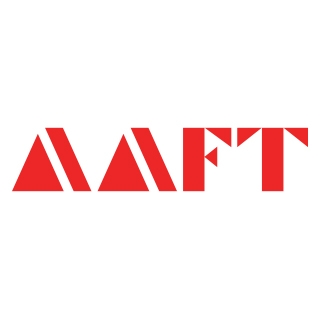
AAFT has been providing the world with limitless creativity and expression since 1993! Through a dynamic and industry-driven curriculum, AAFT provides engaging and captivating articles to persuasive blogs and empowers its readers to explore diverse avenues of creative media education-related content.


